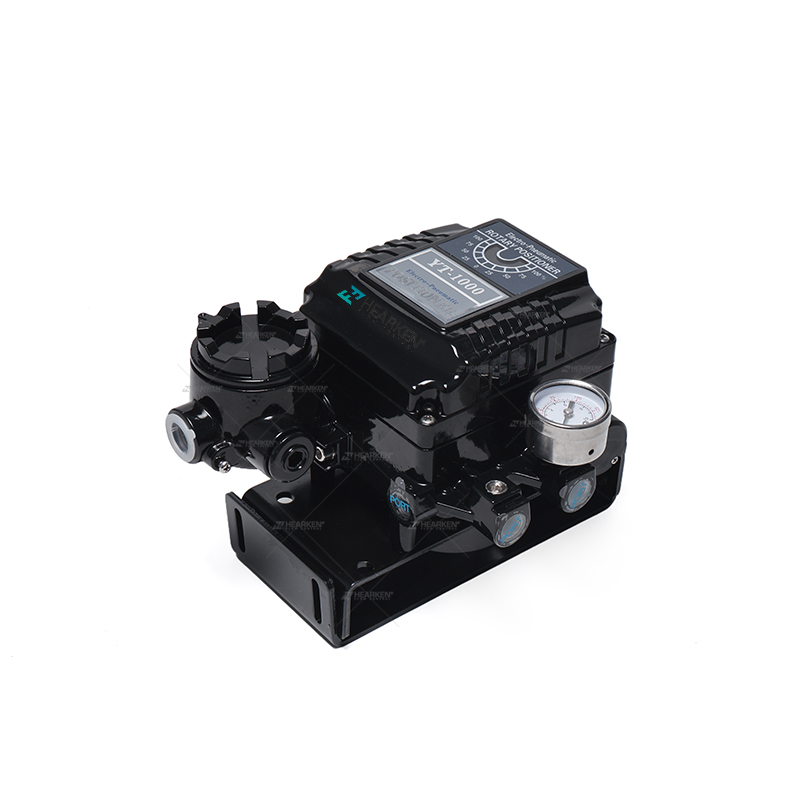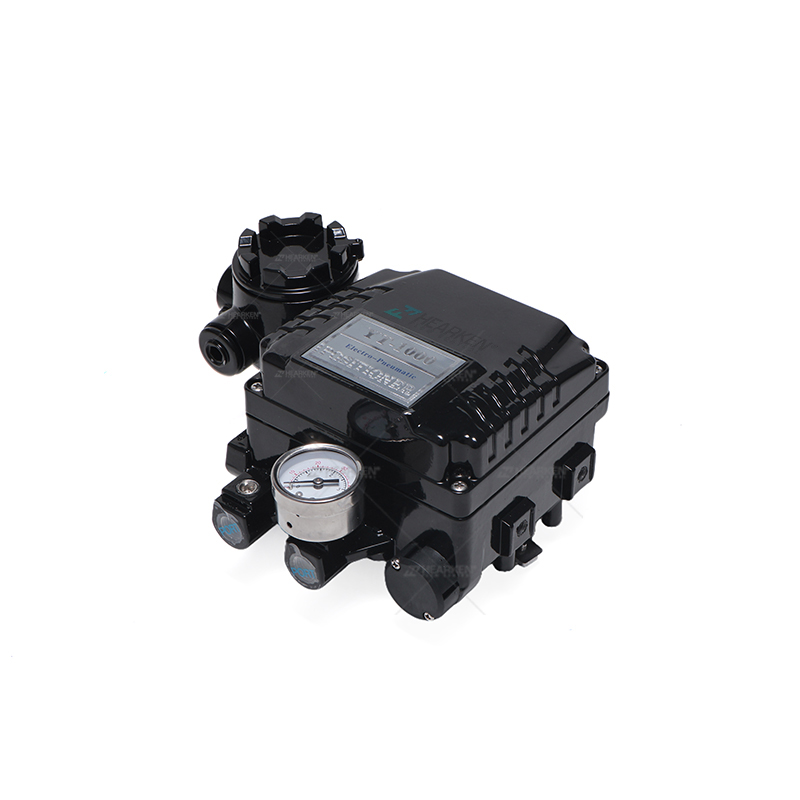Actuator Accessories
Rotary Type Pneumatic Valve Smart Positioner
Precision valve control with 4-20mA input, built-in LCD, low air consumption, and robust
Pneumatic Linear Valve Feedback Positioner
Featuring a built-in LCD display for smart operation, it ensures no resonance within 5-2
Pneumatic Valve Positioner
YT-1200 Pneumatic valve locator is a device that receives pressure signal 5-15Psi form t
3/2 Way, 5/2 Way Aluminum Explosion proof Control Solenoid Valve
Aluminum Explosion proof Solenoid Valve OEM accepted,Sampling accepted Connect function
APL210 Limit Switchbox with Flat Indicator Stainless Steel Bracket
The APL210 limit switchbox has a beautiful and sturdy exterior design, which realizes th
APL510N Limit Switch Box
APL510N Explosion-Proof Pneumatic valve monitor is designed for valves and actuators in
ITS300 Explosion proof Valve Monitor
ITS-300 Explosion-Proof Pneumatic valve monitor is designed for valves and actuators in
HVM-2 Limit Switch Box
The HVM-2 limit switch has a beautiful and sturdy exterior design, which realizes the on
1.What is actuator accessories?
Actuator accessories are those nifty little gadgets that assist actuators in performing their duties. Just like a fine-tuned orchestra needs its conductor, actuators require these accessories to guide them to excellence. Here's a look at some of the maestros of the actuation world:
1.Positioners: These clever devices control the position of the actuator, ensuring that it hits the right notes at the right time.
2.Limit Switches: Much like a vigilant overseer, limit switches ensure that the actuator doesn’t stray too far from its intended path. They signal when the actuator reaches its preset limits.
3.Solenoid Valves: Ah, the solenoid valve - the robust gatekeeper that controls the flow of fluid or air. It's the master of ceremonies for any actuator.
4.Mounting Brackets and Couplers: These are the supporting cast members, connecting the actuator to its intended place and keeping everything in harmony.
5.Manual Overrides: The understudy of the actuator world, ready to take the lead if the power fails, ensuring the show goes on.
6.Signal Transmitters: The communicators, relaying messages between the actuator and its control system like a well-penned script between director and actor.
7.Speed Controls: These are the tempo setters, adjusting the speed of operation to maintain that perfect rhythm.
In the dynamic field of valve automation, the role of actuator accessories is pivotal. Hearken Actuators and Controls, with its 12-year legacy as a passionate and focused partner in valve automation, stands at the forefront of providing state-of-the-art actuator accessories. As an ISO 9001 certified company, our expertise extends to developing pneumatic and electric actuators, actuated valves, and a range of actuator accessories that are essential in various industrial applications.
Components of an Actuator
Actuators, the heart of valve automation systems, comprise several key components:
- Motor: Serves as the power source, either electric or pneumatic.
- Gears: Facilitate the conversion of motor power into the necessary torque.
- Couplings and Linkages: Connect the actuator to the valve, ensuring precise control.
- Control Units: Integral in regulating the actuator's function, aligned with automation demands.
- Sensors and Encoders: Provide feedback and positional accuracy.
Actuator Usage in Industry
Actuators are indispensable in modern industry. They serve as the driving force in valve operation, controlling the flow of various mediums like gases, liquids, or slurries. Industries ranging from oil and gas to water treatment heavily rely on actuators for efficient and precise flow control.
Materials in Actuators
The choice of materials in actuators is crucial for durability and efficiency. Hearken focuses on materials like stainless steel, brass, and specialized alloys that offer corrosion resistance and strength. This focus is in line with our commitment to providing solutions that not only meet but exceed industry standards like ATEX, CE Certification, and SIL 3.
Working Principle of Actuators
The working principle of an actuator revolves around converting energy into motion. Electric actuators transform electrical energy into mechanical torque, while pneumatic actuators use compressed air for this conversion. This fundamental principle enables the precise control of valves, a critical aspect in process industries.
Hearken as Expert Actuation Accessories Manufacturers
As expert actuation accessories manufacturers, Hearken Flow is committed to innovating and delivering high-quality accessories that enhance the performance of actuators. Our range includes positioners, solenoid valves, limit switches, and more, all designed to integrate seamlessly with various actuator types. Our accessories are crafted to ensure reliability and durability, essential in challenging industrial environments.









